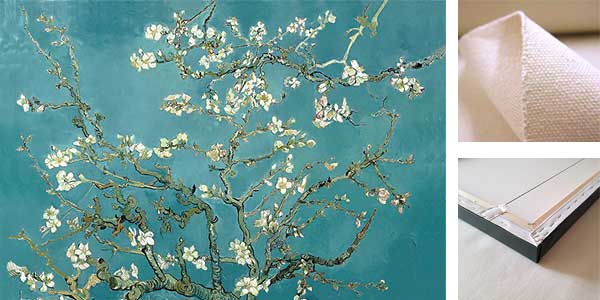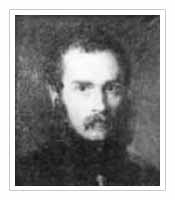
Léon Belly (1827 – 1877)
French Orientalist Painter Léon Belly was born at St. Omer, in 1827. He took his first painting lessons from his mother. The artist, whose subjects are based on orientalism, has technically adopted the soft style of romanticism. After being admitted to the Polytechnic School, he chose painting as a career. He worked with history painter François Edouard Picot and landscape painter Constant Troyon. But it was primarily through his contacts and friendship with the Barbizon painters that he received his artistic training.
Léon Belly is known above all for his imposing painting entitled Pilgrims going to Mecca, considered one of the masterpieces of Orientalist painting.
Purchased by the French State in 1861, hung in the Musée du Luxembourg until 1881, and now in the Musée du Louvre, it saved Belly’s name from oblivion during the years when other nineteenth-century artists were in limbo, victims of changing taste in art. His pictures remained in the hands of friends and collectors who bought them at the 1878 studio sale, or were kept by his widow and children. Despite successive donations by the family to museums in Switzerland and France (Hötel Sandelin in Saint-Omer owns the largest collection), it is only recently that his other works have begun to be rediscovered and appreciated.
Léon Belly Journeys
Belly’s first journey to the Near East was in 1850, when he and another painter, Léon Loysel, accompanied a scientific mission to study the local historical geography, led by LCF. Caignart de Saulcy. They skirted the Dead Sea, and in April the following year, Belly and Loysel went north to Beirut before visiting Cairo and Alexandria. Belly’s pictures of this trip, such as the classical ruins of Baalbek and the curious olive trees at Nabi Jonas, between Beirut and Sidon, show a certain influence of Prosper Marilhat in both colouring and treatment.
Back in France, Belly painted the Fontainebleau forest and spent an active social life with his own musical evenings and gatherings with the artistic and literary circle that had formed around the painter Jules Laurens. His first Salon in 1853 included pictures of the outskirts of Beirut and Cairo. At the Paris 1855 Universal Exhibition, however, he showed French landscapes and the portrait of the great Italian exile Daniel Manin. Belly returned to the Eastern world in October 1855, this time to Egypt, where he stayed in the palace of Soliman Pasha in Old Cairo. In the following spring, he visited the Sinai desert with his friend Narcisse Berchöre ; the two artists often painted the same views. Berchöre was to buy Banks of the Nile, shown at the London Universal Exhibition in 1862, in Belly’s studio sale.
The colours and contours
Belly’s desert landscapes are remarkable, empty of figures, their strange, almost fantastic atmosphere depending only on the rise and fall of the arid ground. “The colours and contours of the landscape are breathtakingly beautiful,” he wrote to his mother. “There are no words to describe the gorgeous colourings, the stunning harmony of an almost violet sky above the sand tinged with mingled purple and gold against a turquoise sea.” Two other canvases, now in the Musée des Arts Africains et Océaniens in Paris, The Libyan Desert and The Dead Sea (Belly’s most famous painting after Pélerins (Pilgrims), also impart a striking and disturbing appearance to the desolateness of these regions.
With Edouard Imer, whom he had met in Cairo, Géröme, Berchöre and Bartholdi, Belly explored the Nile in July to October 1856, painting a series of small pictures, either from the boat on which they were travelling, or from the water’s edge. They show his strong interest in colour harmonies and appreciation of light values. He also made naturalistic studies of camels and buffaloes and oil sketches of figures in bold strokes, where mass and forceful presence prevail over any anecdotal detail. Already struck on a previous visit by the nobility of the gestures made by the Egyptian fellah women, he made further studies for the picture painted in 1863, his first with figures. Belly returned once more to Egypt, in 1857, when Louis Mouchot became his pupil.
After his marriage
After his marriage in 1862, Belly gave up any ideas of more great journeys, but soon won a solid reputation as an Orientalist painter. The 1861 Salon, with views of the Near East and, above all, Pilgrims, was a personal triumph. Although the great importance of the latter was the originality of its lighting, Belly intended this impressive painting to have a greater signification than a mere recording of this religious event, when the sacred carpet, the mahmal, was carried with the pilgrims to Mecca. As P. Wintrebert points out, the Holy Family can be seen to the left: Belly believed that there was a universal religion and one faith in the same God.
Although he continued to exhibit successfully at the Paris Salons during the next few years The Sirens was bought by the State in 1867, by 1874, he failed to find any purchasers for his work. He spent much of his time in his chåteau of Montboulan and although temporarily paralysed, soon recovered enough to work again. He died of apoplexy in his Paris home in 1877.
Literature: C. de Mandach, “Léon Belly,” Gazette des Beaux-Arts, Paris, January and February 1913; P. Wintrebert, Catalogue de l’æuvre de Léon Belly (thesis), Lille University Ill, 1974.
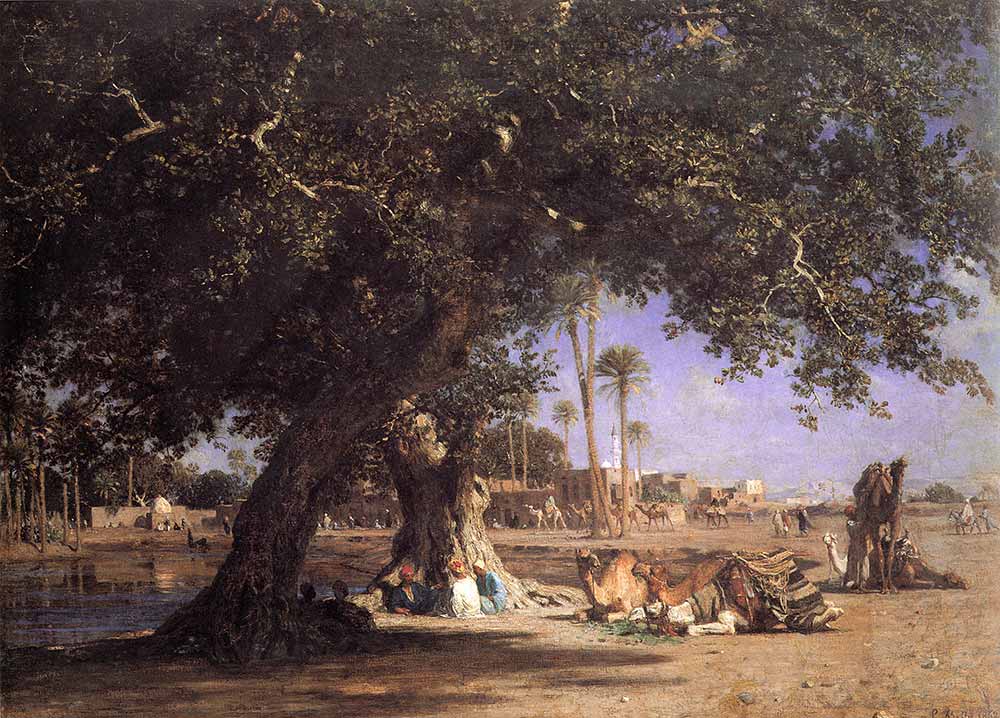
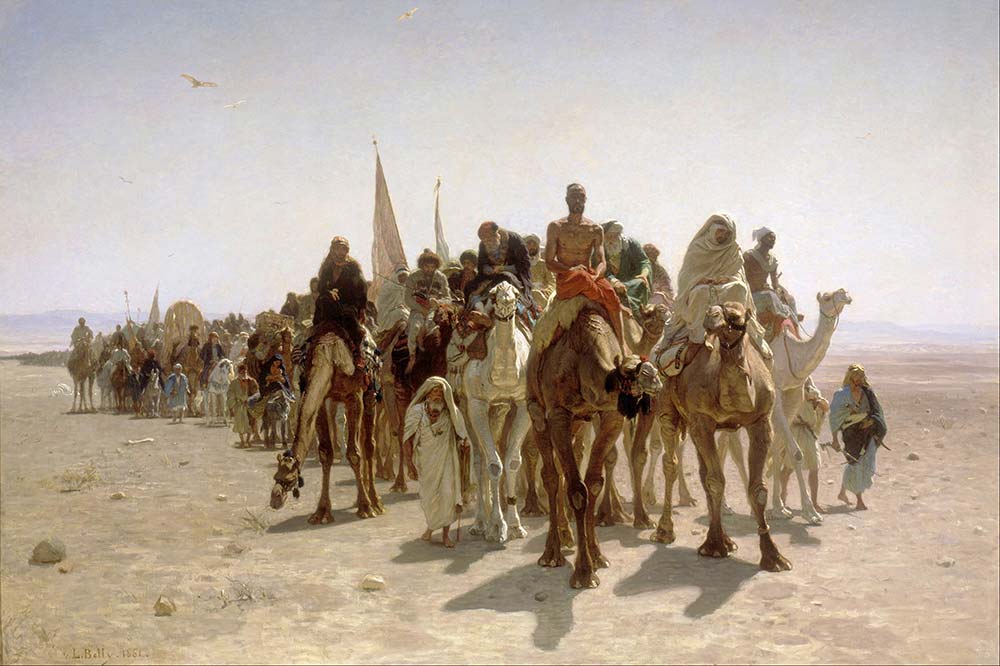
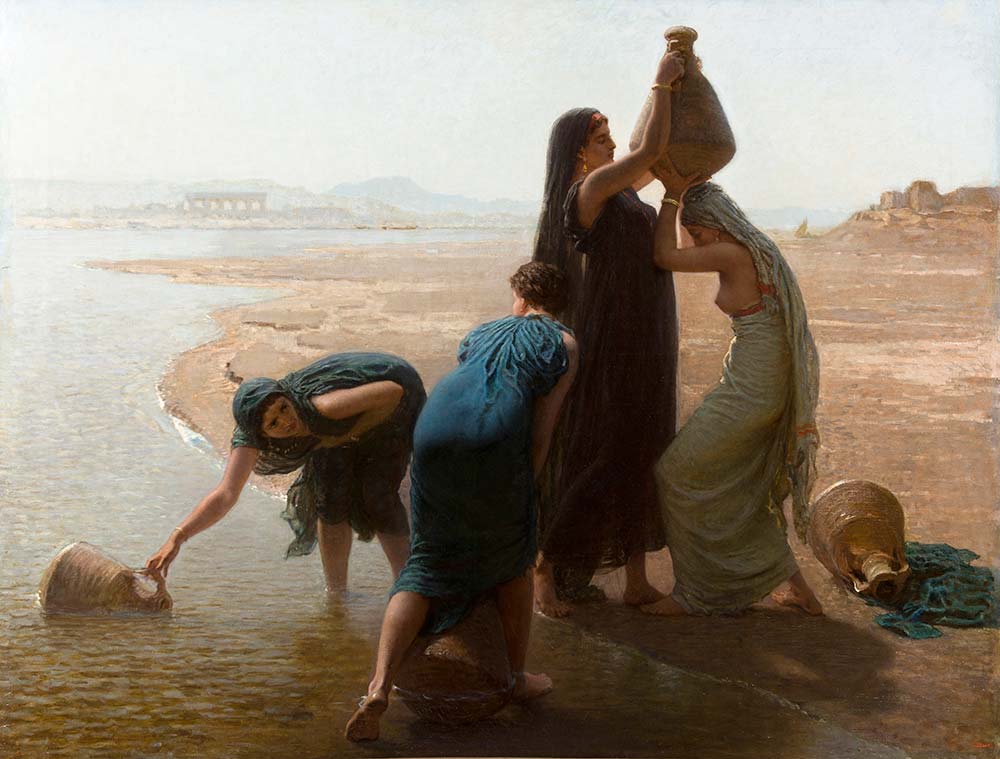
SEE CANVAS PRINT GALLERY FOR THIS PAINTINGS
